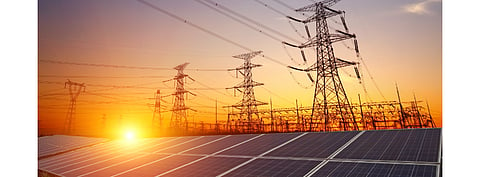

Renewable energy installation plans as submitted by as many as 16 Chinese provinces to be considered for the 14th Five-Year Plan of China (2021 to 2025) adds up to 108.578 GW, of which solar PV's share is coming up to over 67 GW, according to local news portal Polaris Solar Photovoltaic Network.
As per the news report, these plans have been proposed by the provinces of Yunnan, Jiangsu, Zhejiang, Guangdong, Shandong, Sichuan, Jiangxi, Inner Mongolia, Liaoning, Guangxi, Tibet, Hebei, Ningxia, Shaanxi, Gansu, and Hainan, with more expected to follow.
Among some of the big PV numbers some of these provinces aim to add during the 5-year period include 13 GW of PV capacity planned by Zhejiang province, 20 GW by Sichuan province, 11 GW by Jiangxi, and 8.63 GW by Tibet Autonomous Region.
This is quite impressive especially considering the fact that the Chinese government has not specified any renewable energy installation target in the draft 14th Five-Year Plan it has submitted to the national Parliament for deliberation and approval. However, analysts at Roth Capital Partners believe the draft submitted by the National Energy Administration (NEA) is targeting 55 GW to 60 GW of solar power capacity for China in 2021, 'vs. high-flying expectations of as much as 100 GW'. However, a level of 55 to 60 GW would exceed the country's 52 GW installation record from 2017.
Recently, the China Photovoltaic Industry Association (CPIA) said it expects 55 GW to 65 GW of new solar capacity to be installed in China in 2021, up from 48.2 GW it added in 2020 (see CPIA: China To Install Up To 65 GW New Solar In 2021).
Back to the draft plan, it has failed to impress critics and industry stakeholders. China had earlier hinted that achievement of climate goals to reach carbon neutral target before 2060 will figure importantly in the 14th Five-Year Plan (see China Declares Carbon Neutrality Goal By 2060).
In the draft plan, the government has mentioned aiming for 20% non-fossil fuel share in total energy consumption by 2025, increasing it from 15.9% in 2020. It will also target to lower carbon emissions per unit of GDP by 18%, according to Analyst Lauri Myllyvirta of the Centre for Research on Energy and Clean Air (CREA) who pointed out that there is no cap on limiting total energy consumption in the plan.
The government has made space for nuclear power in the draft, aiming to scale its total capacity from 52 GW now to 70 GW in 2025, and as for coal, it should stay since the draft speaks about 'clean' coal.
"The overall five-year plan just left the decision about how fast to start curbing emissions growth and displacing fossil energy to the sectoral plans expected later this year – particularly the energy sector five-year plan and the CO2 peaking action plan," said Myllyvirta. "The central contradiction between expanding the smokestack economy and promoting green growth appears unresolved."
Commenting on the proposed draft plan, Climate Action Tracker's (CAT) China Lead of NewClimatye Institute, Swithin Lui called initial indications as 'underwhelming' showing 'little sign of a concerted switch from a future coal lock-in', while pointing out that the country's decision to not have a 5-year GDP target its emissions growth over the period is 'even more uncertain'.
"The world is relying on its largest emitter to step up on climate change – yet we see little of such action in this plan. There is no clear pathway for China to reach its net zero commitment – the government could do well to revise and strengthen its 2030 target to get its emissions onto that track," added Climate Analytics Chief Executive Bill Hare.
.png?w=50&fm=png)